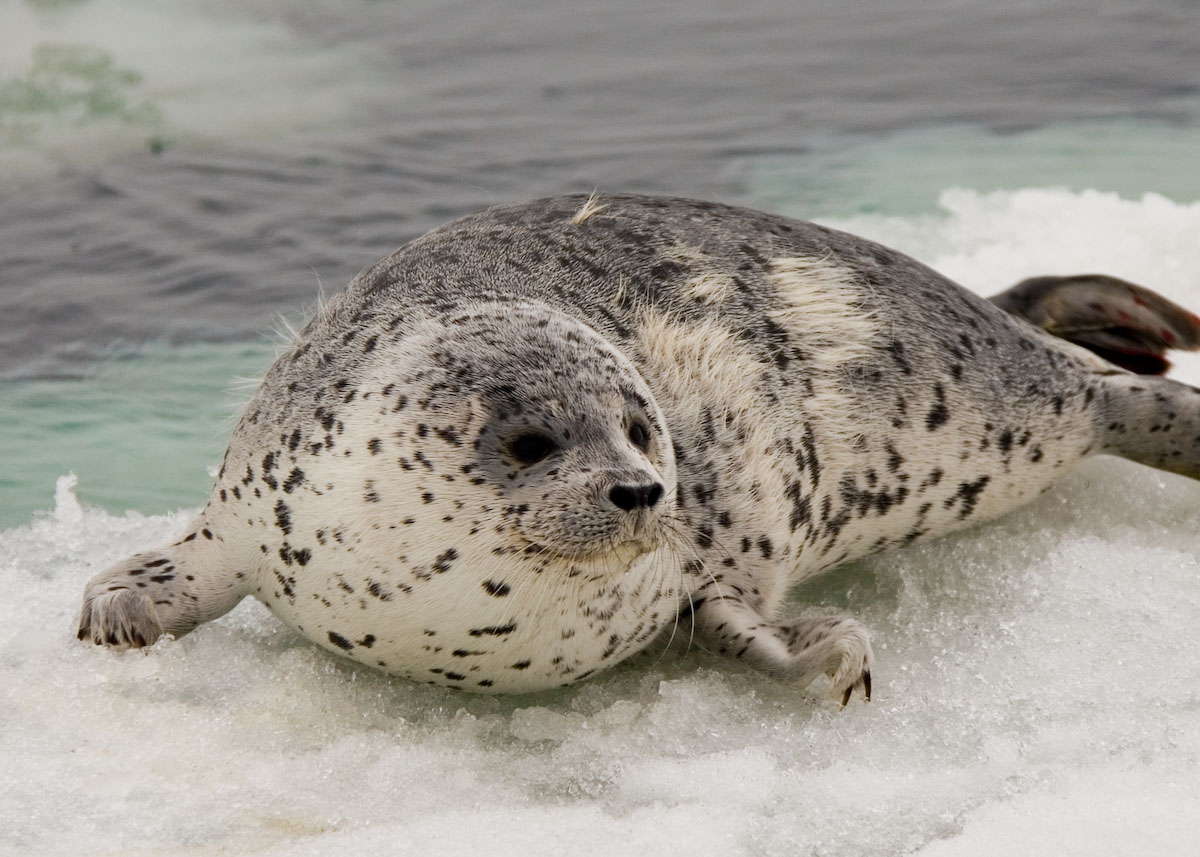An Alaska student project found microplastics in Bering Strait-area spotted seals
Of 29 stomachs that that a University of Alaska Fairbanks graduate student examined, all but one held tiny bits of plastic.

Microplastics pollution has infiltrated regions all around the world, from heavily developed and urbanized areas to remote sites that include the Greenland Sea, the high altitudes in the Alps and the waters and snows of Antarctica.
Now add to that list the bodies of Bering Strait spotted seals.
Microplastics are tiny bits of plastic, generally no bigger than a sesame seed. They are carried on ocean currents, in freshwater bodies and moved around the atmosphere through winds. They are known to be harmful to fish and birds that mistake them for small bits of food.
A University of Alaska Fairbanks graduate student has found them in the stomachs of spotted seals harvested in the Bering Strait region. Of 29 stomachs that Alexandria Sletten examined, all but one held tiny bits of plastic. In all, there were 162 pieces recovered, 161 of which were fiber bits and one that was a clear fragment.
Sletten presented her results at a poster session at this week’s Alaska Marine Science Symposium held in Anchorage.
The stomachs she used for sampling were from seals harvested in 2012 and 2020 by residents of Shishmaref, an Inupiat village on the Chukchi Sea coast, and Gambell, a Siberian Yup’ik village on St. Lawrence Island in the northern Bering Sea. They were made available for her research through the Alaska Department of Fish and Game’s Ice Seal Biological Monitoring project, through which seal hunters donate specimens that are stored and made available to researchers.
Sletten’s sorting revealed no significant difference separating the 2012 seals from those harvested in 2020, which went contrary to her expectation that amounts of microplastics would increase over time. “I’m finding that it’s been there and it’s always been there” over those years, she said.
Similarly, no pattern separated pups from older seals, also a bit of a surprise. “I did expect to see a bit more difference,” she said.
But the presence of microplastics in the animals’ stomachs in general was no surprise, she said. “It’s unfortunately something very ubiquitous for the Arctic and for the world,” she said.
As is the case elsewhere, scientists in Alaska have been working for years to better understand the presence and spread of microplastics in the environment. Some pioneering work focused on Bering Sea and Aleutian birds, tracking not just the plastic bits in their bodies but even the chemical contaminants called phthalates that spread into body tissues and even eggs from ingested plastics.
However, there has not been a lot of research into microplastics in Alaska marine mammals, something that’s unfortunate in a region where many people depend on hunting marine mammals for food, she said.
Sletten is using this research in her thesis for her master’s degree in marine biology. She intends to do further work, with many more samples, to better parse out life stages of the seals, seasons of harvest and other factors that might correspond to varying levels of microplastics.
This story was first published by Alaska Beacon and is republished here under a Creative Commons license. You can read the original here.
This article has been fact-checked by Arctic Today and Polar Research and Policy Initiative, with the support of the EMIF managed by the Calouste Gulbenkian Foundation.
Disclaimer: The sole responsibility for any content supported by the European Media and Information Fund lies with the author(s) and it may not necessarily reflect the positions of the EMIF and the Fund Partners, the Calouste Gulbenkian Foundation and the European University Institute.
